Probably as long as we humans has worn clothes, brooches of various kinds have excised. First they were probably made of bones and other natural materials, and later they were made of different metals. The word ‘brooch’ is a common archaeological term for artfully designed needles that were meant to hold textile (as in garments) together. The widely varying forms of brooches in the Bronze Age, but especially in the Iron Age, are important for chronological determinations of prehistoric finds.
There are many different types of brooches. One of the oldest types are fibulae, known from the early Bronze Age. From the Migration and Merovingian period, as well as the Viking age, we have equal arm brooches and ‘disc on bow’ brooches. From the Migration period and the Merovingian period we have disc brooches. From the Viking age we have oval brooches (or tortoise brooches) and trefoil brooches. Ring brooches have been found from many different. At least from the Migration period and until modern days, ring brooches have been used. Of course there are several more types, but this is just to mention some.
In some contexts the brooches were just practical, to keep garments in place, and in other contexts the brooches were merely decorative and flashy. I’ve already written a bit about brooches and jewelry in general and the symbolic meaning behind some of them them. You can read more here. In this post I would like to show you some of my favorite brooches of different kind from Trøndelag. Of course, my favorites are the flashier ones, but some practical ones may be included. Let’s begin with the oldest type, the fibulae, and work our way towards our time.

Fibula (T2205) made of bronze, from Steinkjer, Bronze age.
Photo by Ole Bjørn Pedersen, NTNU Vitenskapsmuseet, CC BY-SA 4.0

Fibula (T5590) made of gold, from Steinkjer, Late Roman period.
Photo by Ole Bjørn Pedersen, NTNU Vitenskapsmuseet, CC BY-SA 4.0
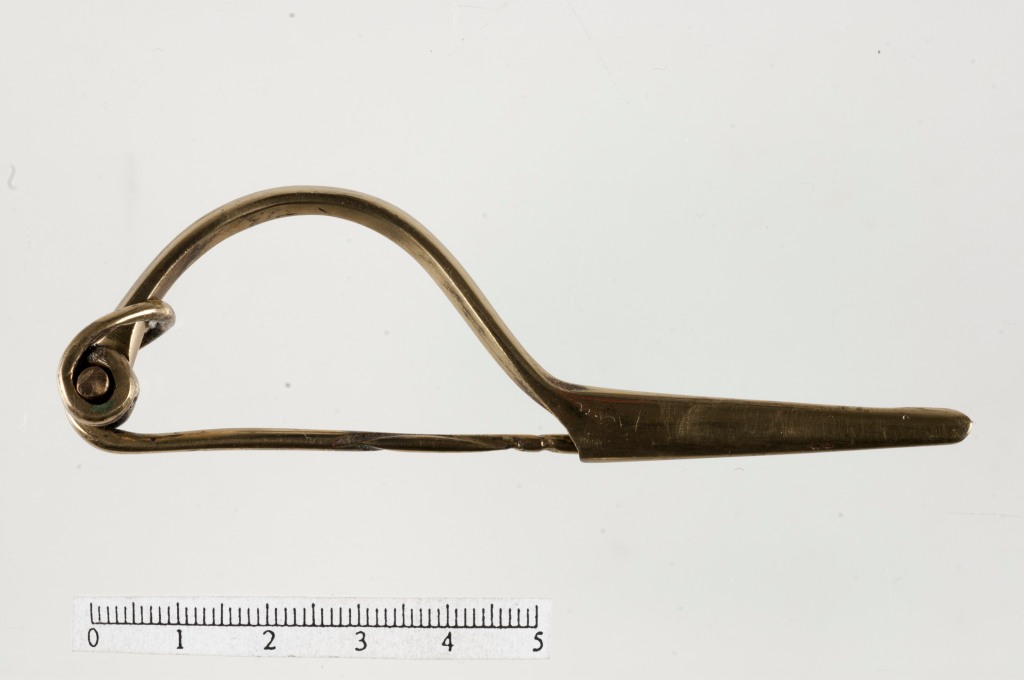
Fibula (T8803) made of copper alloy, from Island, Frosta, Late Roman period.
Photo by Ole Bjørn Pedersen, NTNU Vitenskapsmuseet, CC BY-SA 4.0
These are simpler fibulae, almost without any decorative elements, they are just beautiful in themselves. The spirals serves as a decorative element, but can also be part of the closing mechanism, which makes the tension. The closing mechanism on these three is very similar to a safety pin.

Fibula (T492) made of bronze and silver, from Ørland, Late Roman period.
Photo by Ole Bjørn Pedersen, NTNU Vitenskapsmuseet, CC BY-SA 4.0

Fibula (T16364:n) made of silver and bronze, from Melhus, Late Roman period.
Photo by Ole Bjørn Pedersen, NTNU Vitenskapsmuseet, CC BY-SA 4.0


A pair of brooches (T9827) with animals in a S shape, made of silver. These were found at Inderøy and have been dated to the Migration period. Photos by Kari Dahl, NTNU Vitenskapsmuseet, CC BY-SA 4.0
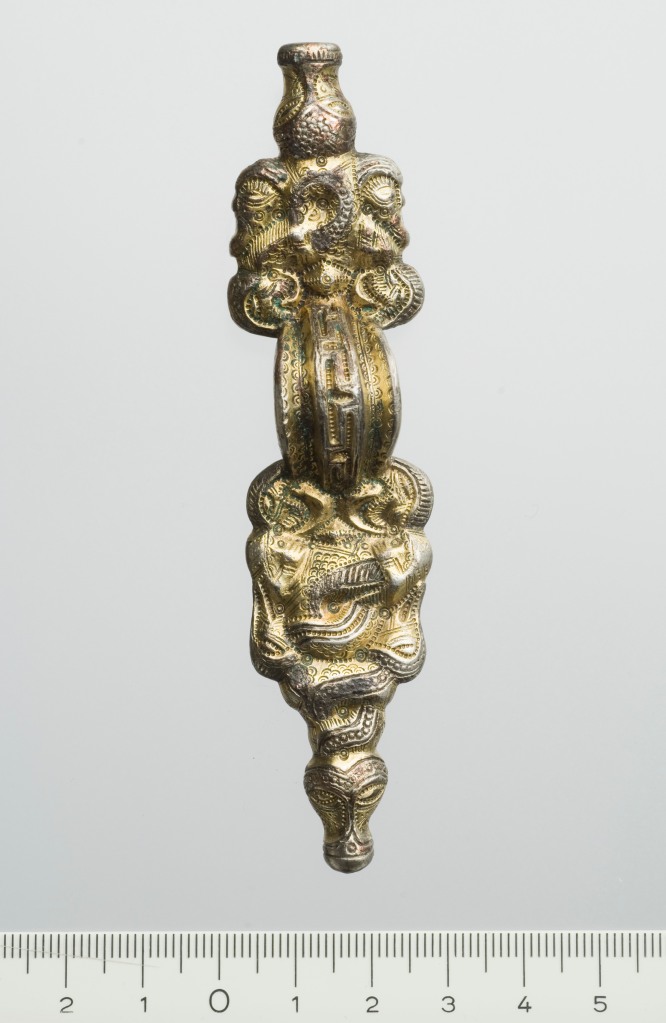
Brooch (T9823) made of silver and niello technique, from Inderøy, Migration period.
Photo by Kari Dahl, NTNU Vitenskapsmuseet, CC BY-SA 4.0

‘Disc on bow’ brooch (T1821) made of silver, bronze and iron, from Åfjord, Migration period.
Photo by Kari Dahl, NTNU Vitenskapsmuseet, CC BY-SA 4.0

‘Disc on bow’ brooch (T9822) made of bronze, niello technique and silver, from Inderøy, Migration period.
Photo by Kari Dahl, NTNU Vitenskapsmuseet, CC BY-SA 4.0
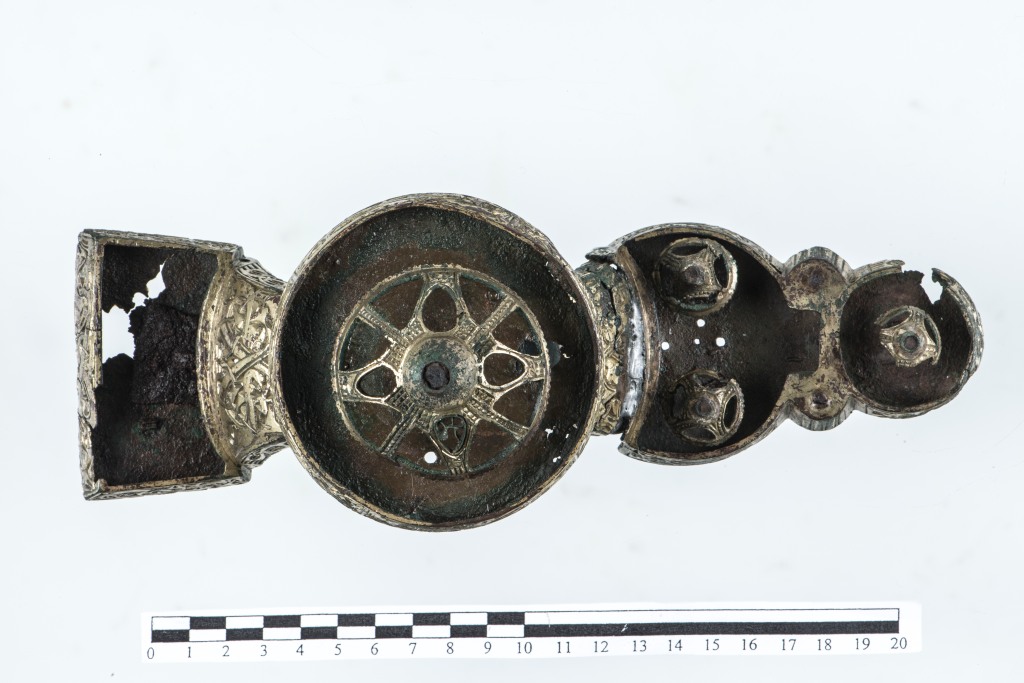
‘Disc on bow’ brooch (T41) made of lead, iron, brass and tin, from Melhus, Merovingian period.
Photo by Ole Bjørn Pedersen, NTNU Vitenskapsmuseet, CC BY-SA 4.0
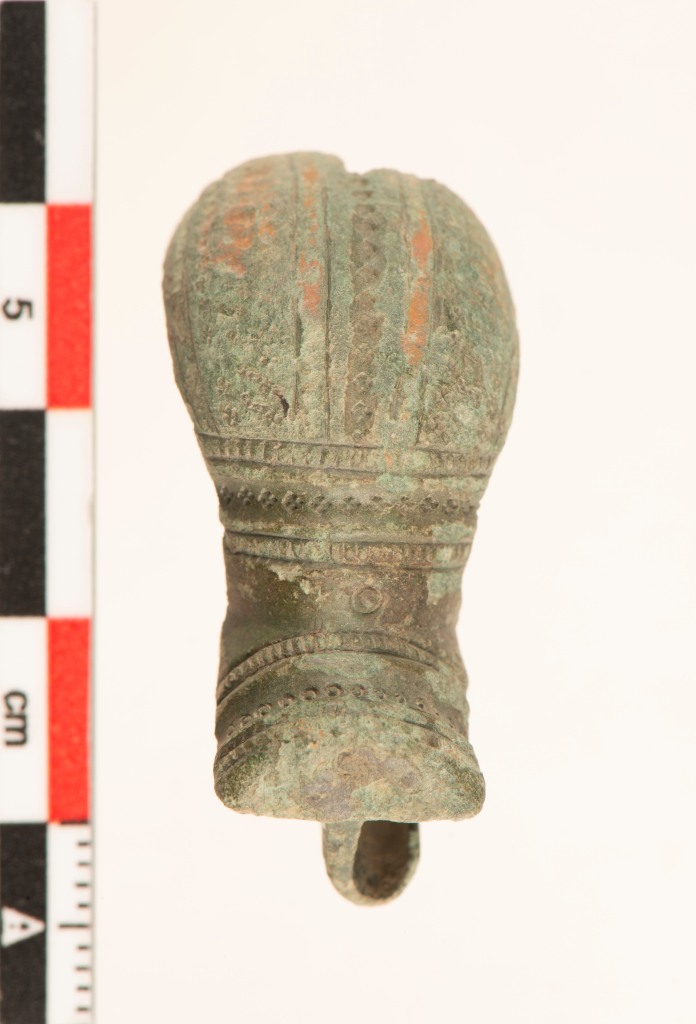
Equal arm brooch (T28143:3) made of copper alloy, from Mære, Migration /Merovingian period.
Photo by Terje Masterud Hellan, NTNU Vitenskapsmuseet, CC BY-SA 4.0

Equal arm brooch (T27694) made of copper alloy, from Sunndal, Migration / Merovingian period.
Photo by Caroline Fredriksen, NTNU Vitenskapsmuseet, CC BY-SA 4.0

Conical disc brooch (T27318) made of copper alloy, from Sunndal, Merovingian period.
Photo by Ole Bjørn Pedersen, NTNU Vitenskapsmuseet, CC BY-SA 4.0

Conical disc brooch (T15808:a) made of gilded bronze, from Storfosen, Merovingian period. Found as a pair.
Photo by Ole Bjørn Pedersen, NTNU Vitenskapsmuseet, CC BY-SA 4.0

Conical disc brooch (T19507:a) made of bronze, iron and bone, from Heim. Merovingian period.
Photo by Ole Bjørn Pedersen, NTNU Vitenskapsmuseet, CC BY-SA 4.0

Disc brooch (T27546) made of copper alloy with cloisonné technique, from Stjørdal, Viking age.
Photo by Terje Masterud Hellan, NTNU Vitenskapsmuseet, CC BY-SA 4.0

Oval brooch (T15625) made of bronze, from Steinkjer, Merovingian period.
Photo by Ole Bjørn Pedersen, NTNU Vitenskapsmuseet, CC BY-SA 4.0
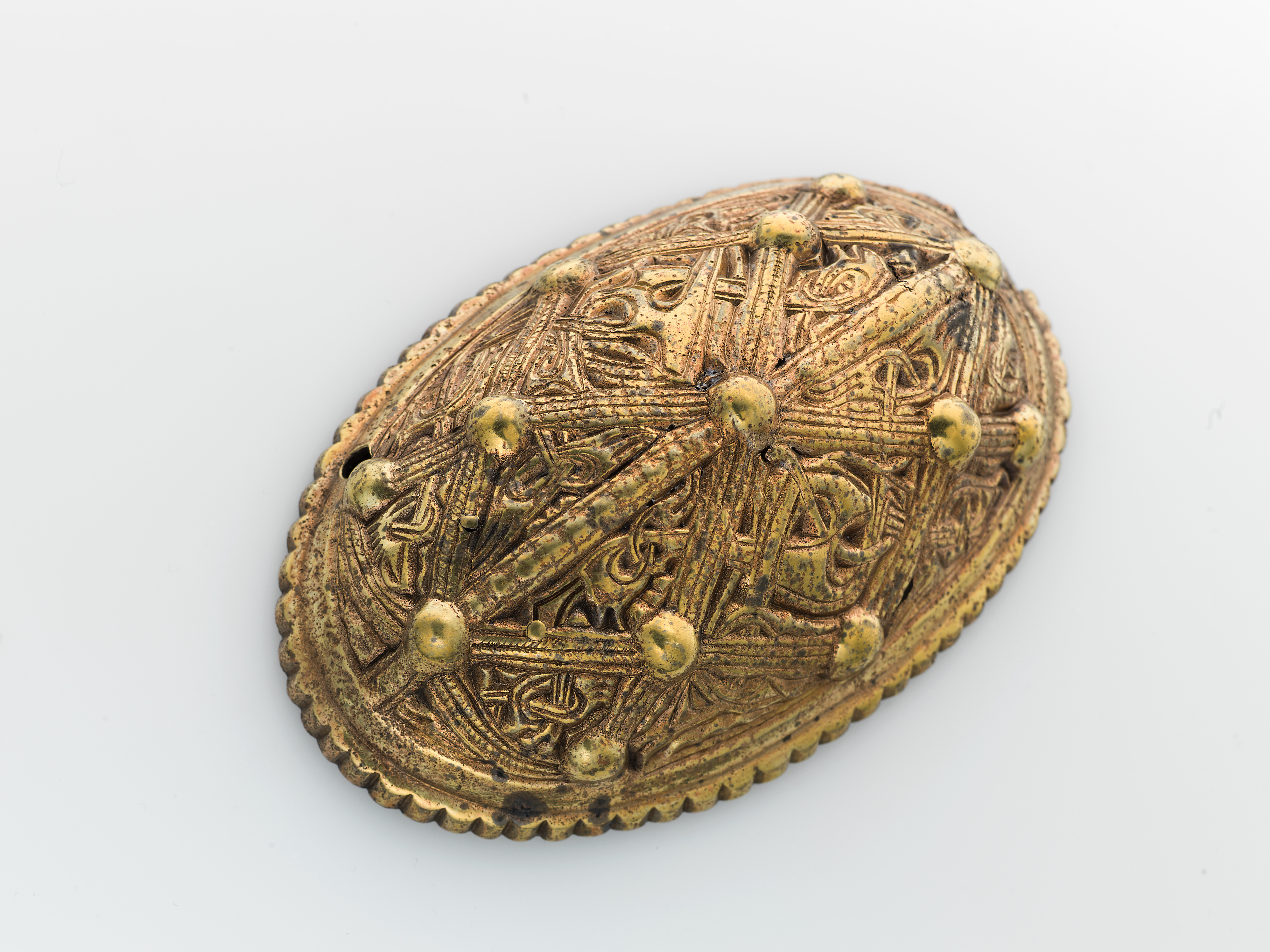

Oval brooches (T17679:b) made of bronze. These two were found as a pair at Grande, Ørland and is dated to the Merovingian period. Photo by Åge Hojem, NTNU Vitenskapsmuseet, CC BY-SA 4.0

Oval brooch (T18960:a) made of bronze, from Uthaug, Ørland, Viking age.
Photo by Ole Bjørn Pedersen, NTNU Vitenskapsmuseet, CC BY-SA 4.0

Oval brooch (T862) made of bronze and copper. Unknown origin. Viking age.
Photo by Åge Hojem, NTNU Vitenskapsmuseet, CC BY-SA 4.0

Oval brooch (T10649) made of bronze, from Namsos. Viking age. Found as a pair.
Photo by Åge Hojem, NTNU Vitenskapsmuseet, CC BY-SA 4.0
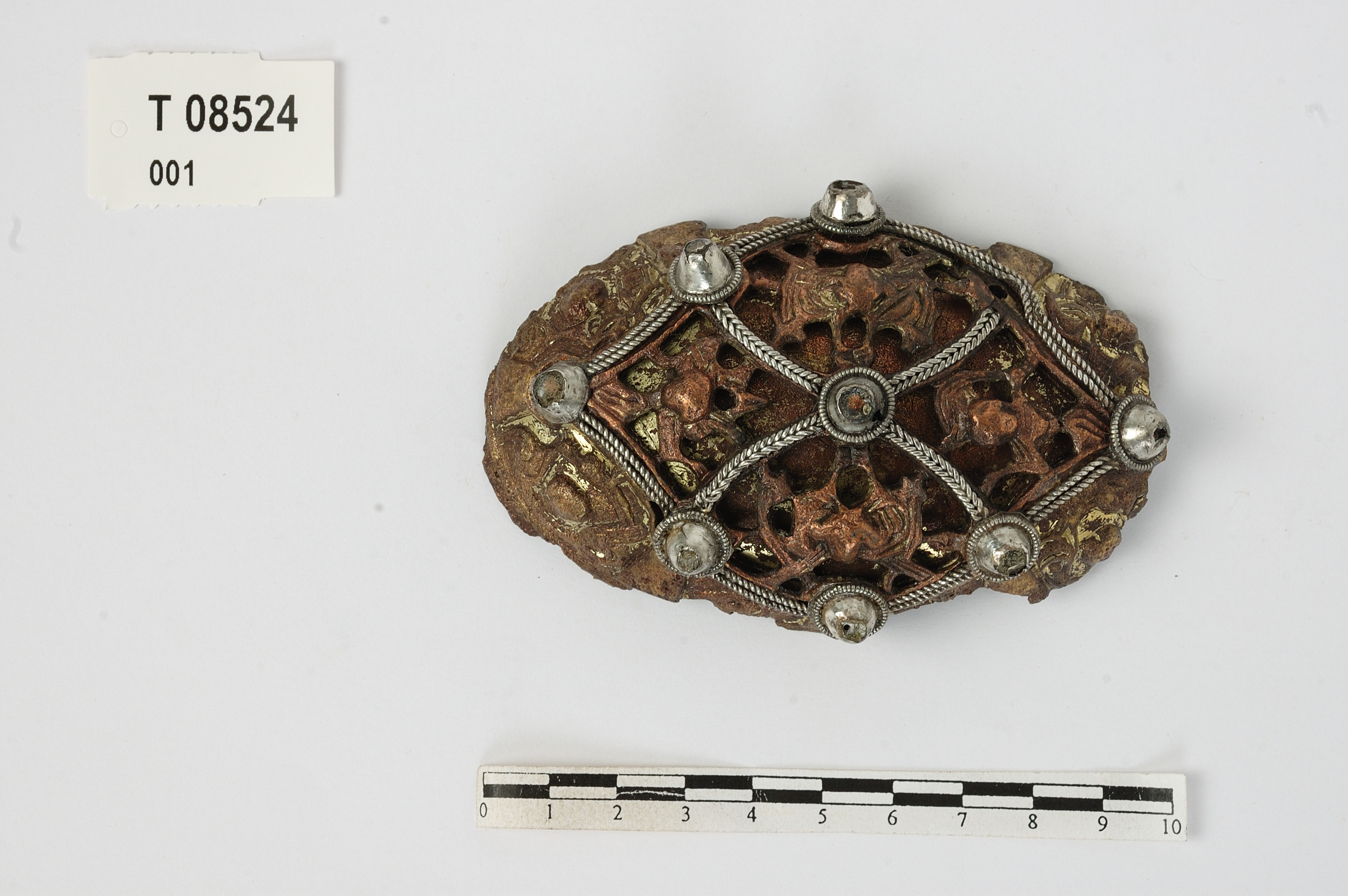
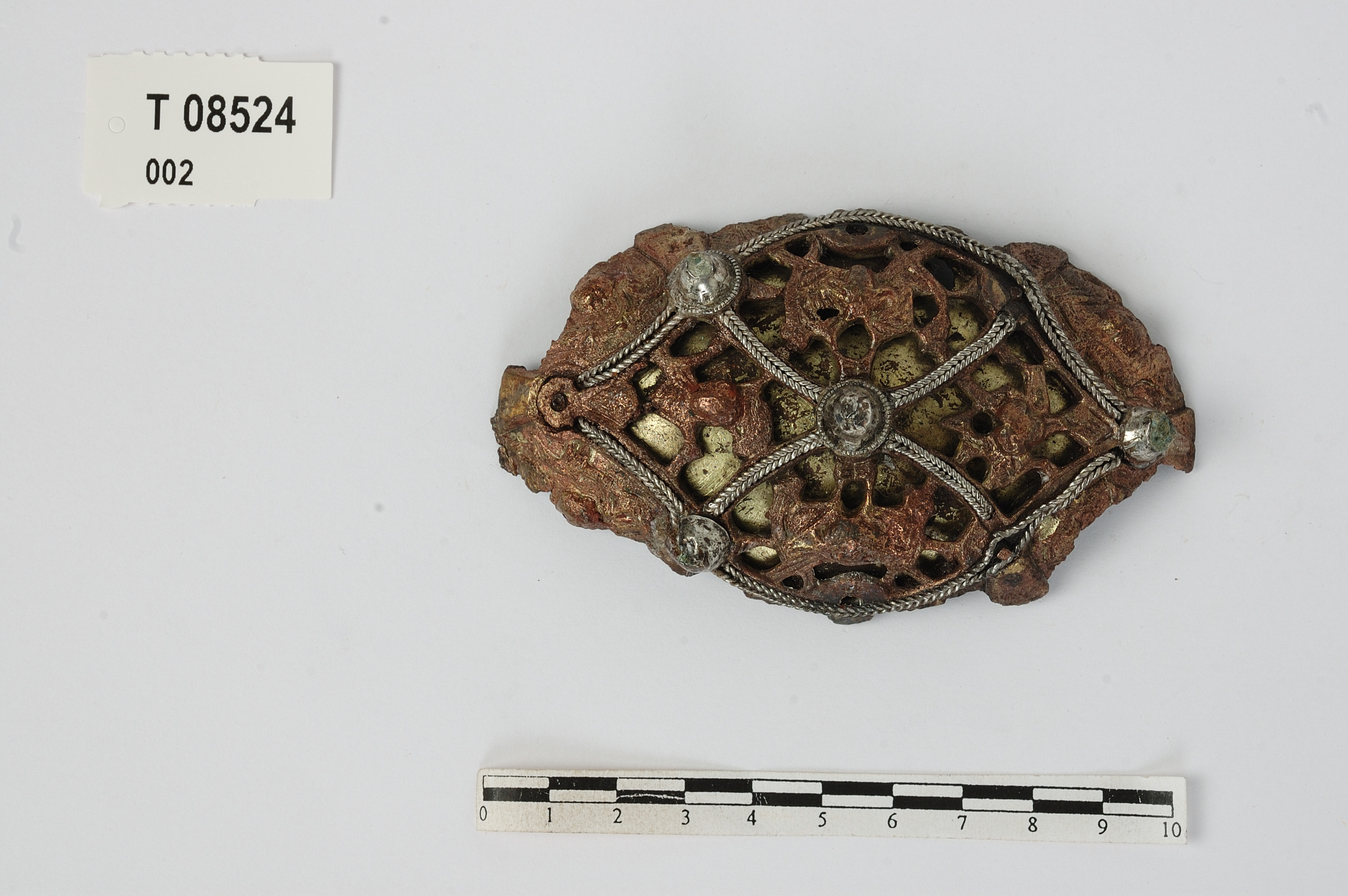
Oval brooches (T8524 a and b) made of bronze and silver. These two were found as a pair in Skaun and is dated to the Viking age. Photo by Ole Bjørn Pedersen, NTNU Vitenskapsmuseet, CC BY-SA 4.0.
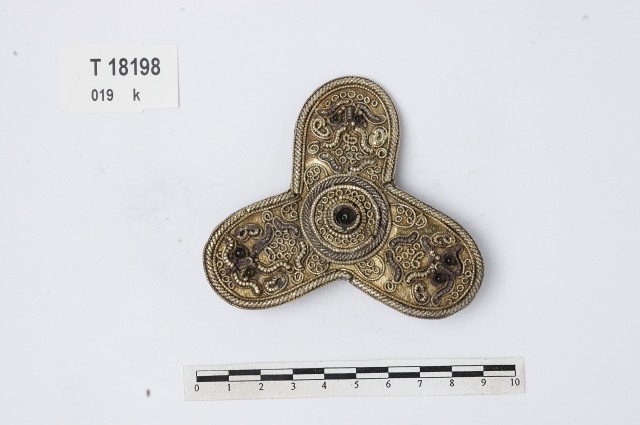
Trefoil brooch (T18198:k) made of silver, gold and glass, from Rauma. Viking age.
Photo by Ole Bjørn Pedersen, NTNU Vitenskapsmuseet, CC BY-SA 4.0
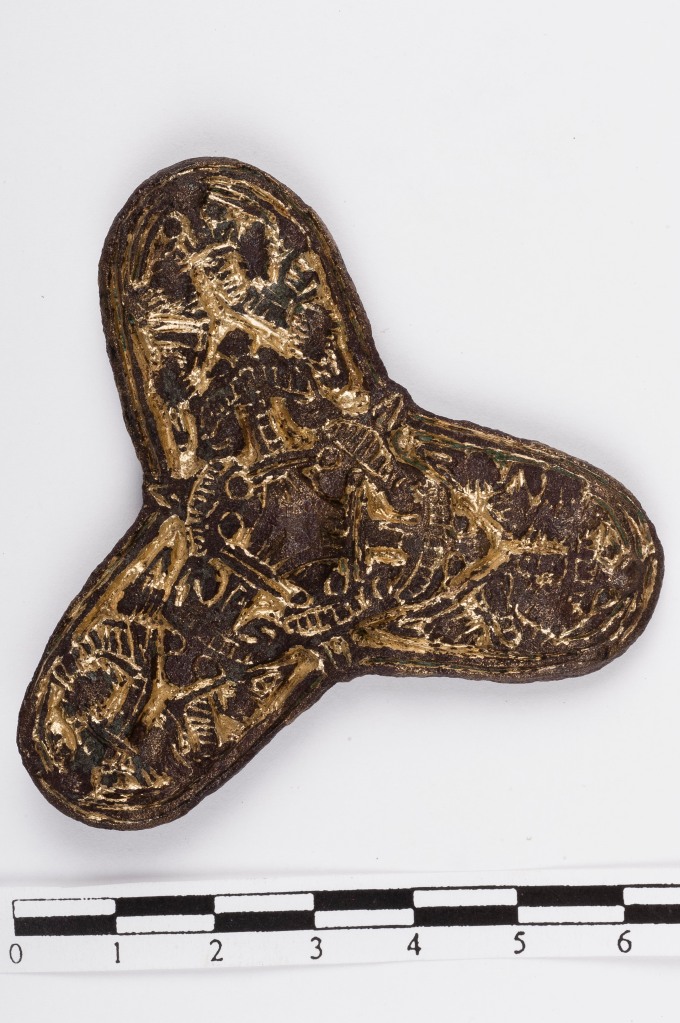
Trefoil brooch (T8673) made of bronze and iron, from Inderøy, Viking age.
Photo by Ole Bjørn Pedersen, NTNU Vitenskapsmuseet, CC BY-SA 4.0

Ring brooch (T27088:3) made of copper alloy, from Skaun, Migration period.
Photo by Ole Bjørn Pedersen, NTNU Vitenskapsmuseet, CC BY-SA 4.0

Ring brooch (T2288) made of bronze, from Verdal, Migration period.
Photo by Ole Bjørn Pedersen, NTNU Vitenskapsmuseet, CC BY-SA 4.0

Ring brooch (T13711:c) made of bronze, from Ørland, Viking age. Originally from Irland.
Photo by Kari Dahl, NTNU Vitenskapsmuseet, CC BY-SA 4.0
Information:
Store norske leksikon – fibula
Store norske leksikon – spenne
Collections Online
